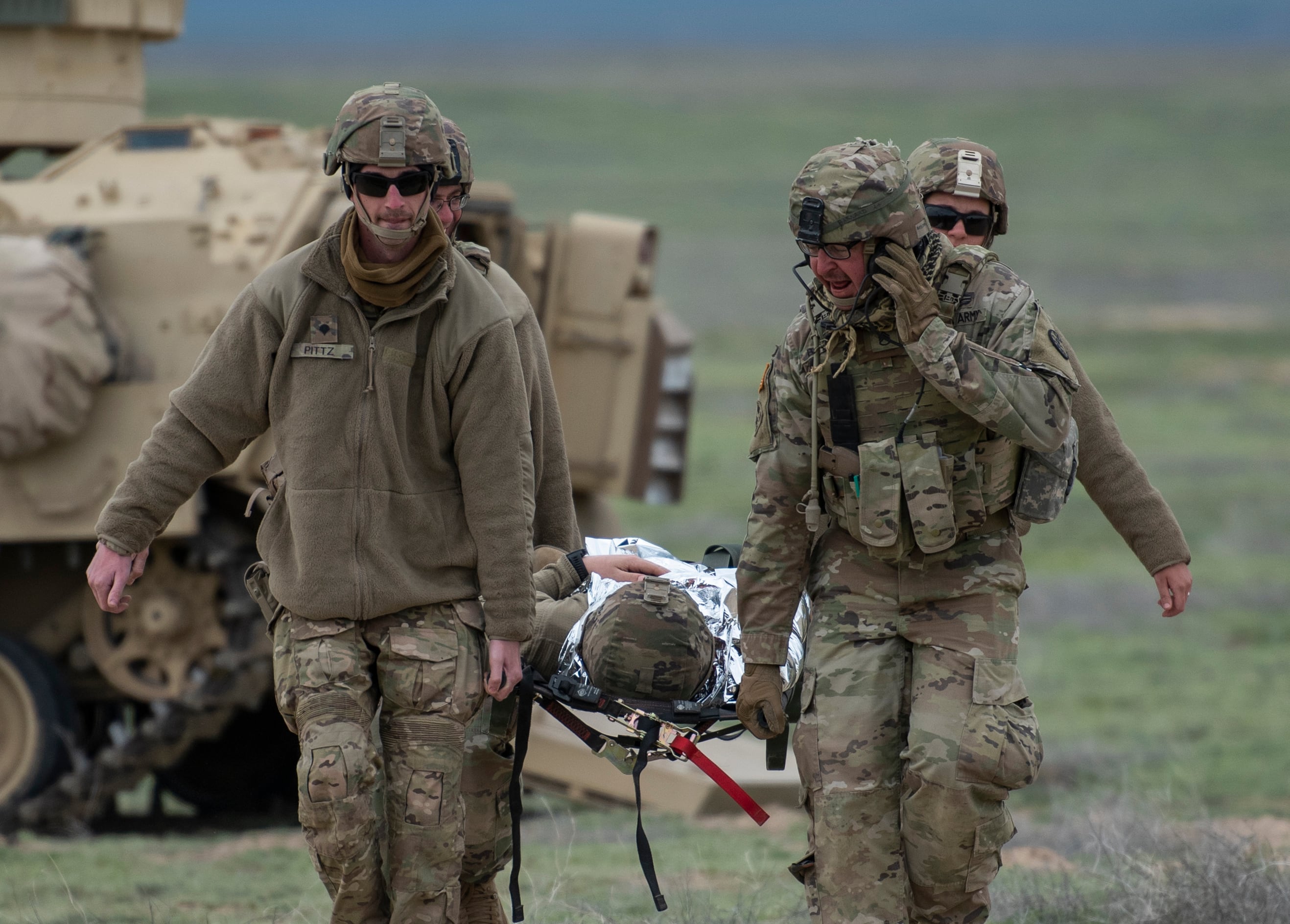Marines are likely to learn some high-speed skills from Army Green Berets as the two forces prep for more joint missions in troubled African hot spots.
Grunts from Special Purpose Marine Air Ground Task Force-Crisis Response-Africa recently teamed up with Army Special Forces in Germany for advanced small unit infantry training, building on similar training with the 10th Special Operations Group held last year in Baumholder.
The week-long event pushed the Marines and SF soldiers towards greater future interoperability by sharing each other’s tactics, techniques and procedures, according to Maj. Scott Murphy, SP-MAGTF-CR-AF’s operations officer.
"We have a mutual interest in developing our combat capability as a joint force out there on the battlespace," he said. "We were very fortunate to receive a robust personal and professional relationship with our training partners from the previous iteration of the MAGTF."
Both groups are tasked by U.S. Africa Command to take on similar security challenges across the continent - an area of responsibility consisting of 53 countries and millions of square miles.
Having consistency between them as they work together in future operations simply makes sense, according to retired Army Special Forces Col. Steve Bucci.
"Quite simply, there are more potential missions out there than either group can handle alone," said Bucci, who is now an independent security consultant and visiting research fellow at the Heritage Foundation’s Allison Center for Foreign Policy Studies.
These missions will range from neutralizing transnational threats, protecting U.S. personnel and facilities, preventing and mitigating conflict and building partners’ indigenous defense capability, according to Africom.
"Most of these will be training missions, passing on combat and combat support skills to selected African units," Bucci said. "This will increase the readiness of the local forces and build relationships."
For the Marines, the joint training is part of the Corps’ strategy to get back to its expeditionary roots in the post-Afghanistan world.
Its Expeditionary Force 21concept, published two years ago, specifically calls on the MAGTFs to work hand in hand with Special Operations Forces to prep small units to operate independently over large swaths of land.
"We must seek every opportunity to collaborate, plan, exercise and experiment with Special Operations Forces in order to achieve operational synergy during steady-state, crisis response and contingency operations," the document states. "This includes developing, experimenting with and exercising tactics, techniques, and procedures for the incorporation of SOF preparation of the environment activities."
While this places a greater emphasis on high-speed communications technology, old-school infantry tactics, techniques and procedures will never go out of style as Marines continue to be called into the world’s hot-spots.
Whether evacuating civilians from danger at embassies, securing coastal airstrips or bases or training up indigenous security forces, training with the Green Berets fine-tuned the Marines’ skills for their mission set, said platoon commander First Lt. Ryan Rullman.
"Given we’re a standard infantry unit, we usually have a much larger footprint when we’re conducting operations," he said. "They had a ton to bring to the table: working with these guys showed the Marines a great example of what they can strive to achieve in proficiency levels in conducting combat operations."
Over the training event, the Green Berets and the Marines ran through close quarter combat drills, advanced marksmanship and combat lifesaving training, as well as urban warfare courses.
One of the key take-aways was learning different ways for small elements to move quickly through these urban areas with minimal exposure, Rullman said.
"The other portion that stuck out was definitely the shooting portion," he said. "The guys we were working with specialize heavily in CCQ and their shooting skills follow, so they were able to show us some very advanced shooting techniques."
The shooting exercises built in different scenarios, forcing the Marines to think on their feet while engaging targets with their weapons.
Such stressors were intentional, building on the Army SF unit’s special capabilities, Murphy said.
"We were able to put an increased pressure on the human factors in combat," he said. "It increased the physical and emotional stress while making sure the Marines could still function as effective infantryman on the battlespace."
The training gave the Marines the opportunity to teach the Green Berets how they do business as well.
Building on their relationship also meant familiarizing the Green Berets with the Marines’ TTPs and standard operating procedures, Rullman said.
"This is going to enhance our ability to cooperate with them in future training or situations supporting them down on the continent of Africa," he said.
The training culminated with the Marines and Green Berets fighting side by side to clear an abandoned housing area and capture an enemy target.
Looking back, Rullman said working with Army SF went exactly as you’d expect.
"They’re a group of very hard-working professionals who are extremely good at what they do," he said. "They had a ton to bring to the table and not only are they proficient at what they do, they’re excellent teachers as well: the Marines took a ton out of the experience."
Matthew L. Schehl covers training and education, recruiting, West Coast Marines, MARSOC, and operations in Europe, Africa and the Middle East for Marine Corps Times. He can be reached at
.





